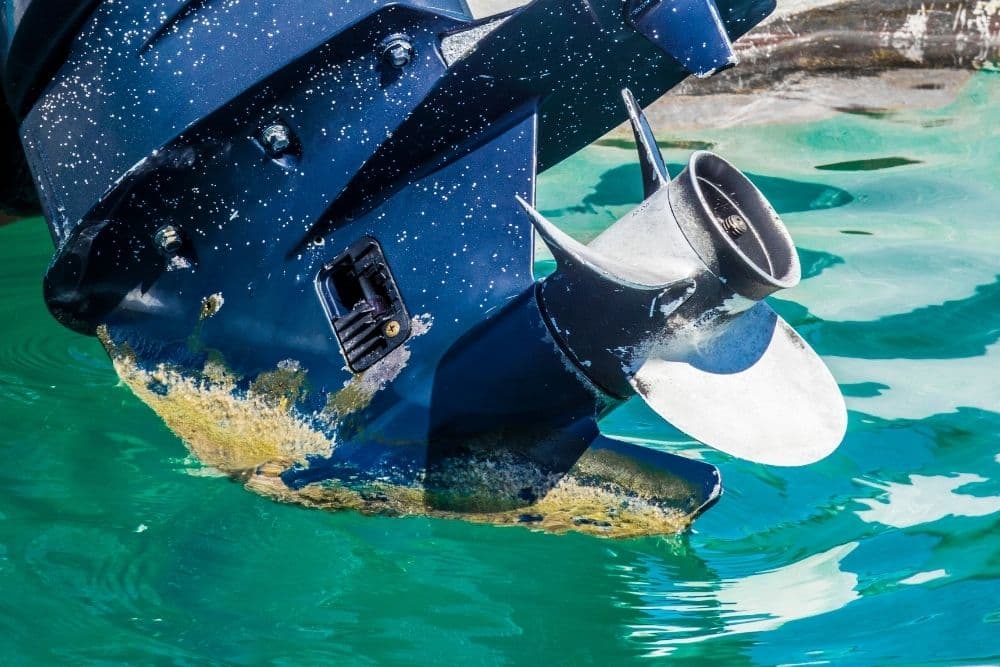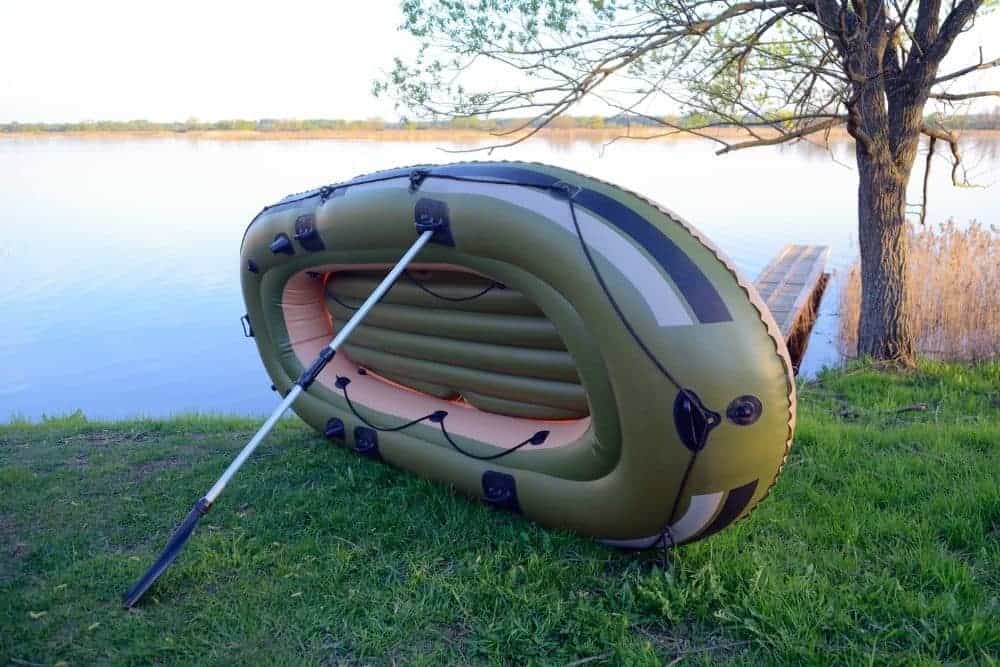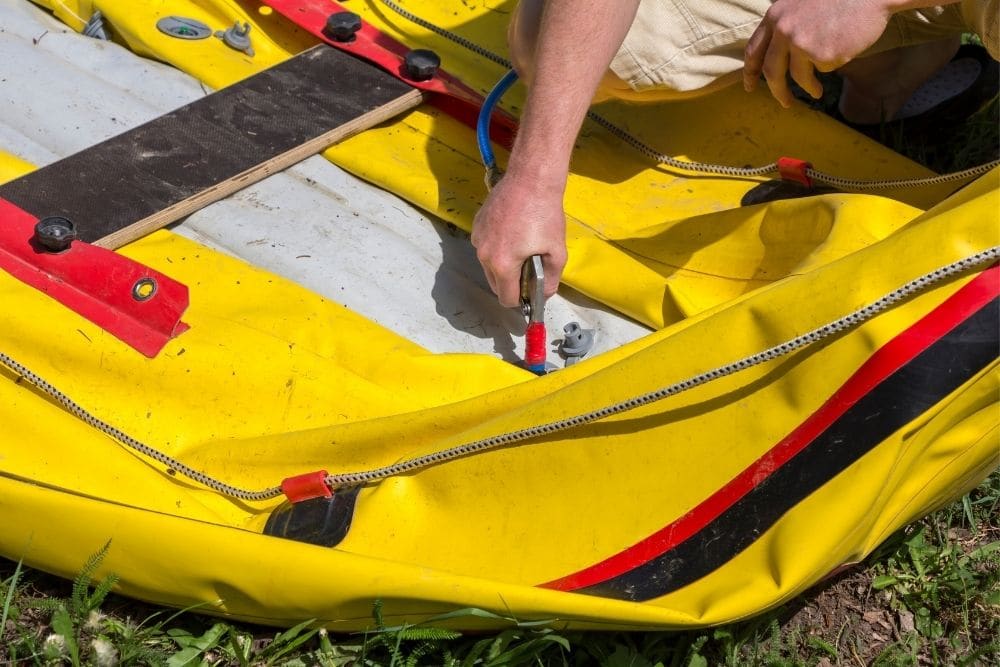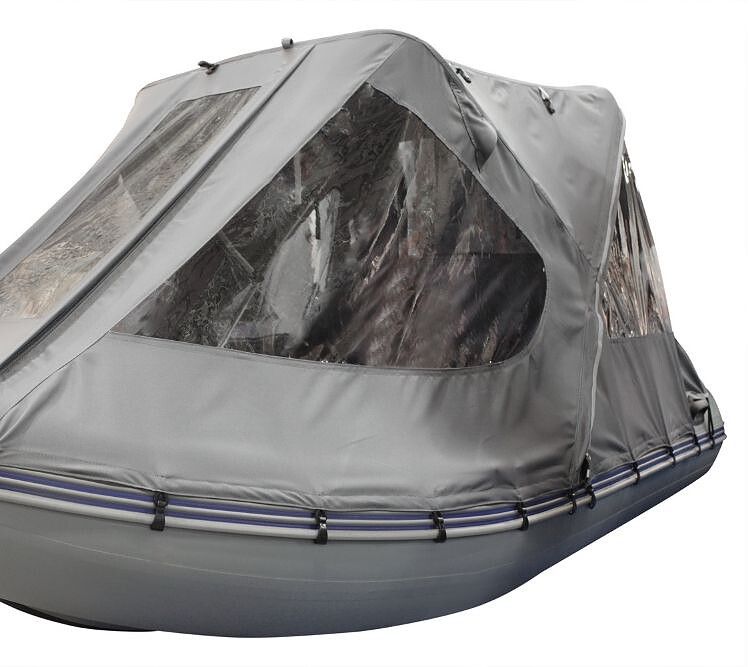As winter nears and the temperature starts falling, boat owners have to prepare their boats for the colder weather. Putting away your beloved inflatable boat can definitely be a challenge, and we’re here to help you through it.
Because storing an inflatable boat in the winter months can be confusing, we’ve gathered all the relevant information and compiled it into one article. Read on to learn why your inflatable boat needs to be winterized and how you should prepare your boat for winter storage.
Table of Contents
The Importance of Winterizing Your Inflatable Boat
Although inflatable boats are both, cost-effective and convenient, they are vulnerable when it comes to harsh winter weather. The importance of protecting your boat against such weather cannot be understated – it can be both, dangerous and costly to forego this step.
What Happens if You Don’t Winterize a Boat?

Most inflatable boats are made from three different materials – PVC, Polyurethane, and Hypalon (neoprene). While these are fairly durable, they can only last through so much.
When boats aren’t winterized or aren’t winterized properly, you can get a nasty surprise when spring comes along. This includes things like brown froth spewing from cracks in the engine block or brown liquid appearing on the dipstick.
Any water droplets will freeze and expand, which results in cracking – this can do everything from blowing off a hose to damaging your engine.
The repair can be time-consuming and costly. Freeze damage repair usually requires replacing the entire engine – avoid this costly mistake by properly winterizing your inflatable boat!
Winterizing your inflatable boat only takes a few hours – at most, it may take a day. In contrast, repairing the entirely preventable damage can take weeks and can significantly impact your time on the water.
Storing an Inflatable Boat Inflated vs. Deflated
It’s possible to store your inflatable boat, both inflated and deflated, but we would suggest the former. We’ve outlined both options below, so feel free to choose either one.
Inflated

The major benefit of storing your boat inflated is that it’s more tear and puncture-resistant. Because it’s taut, it is stronger, with the seams and attachments being able to hold up better under pressure.
Mice and other rodents are known for nibbling at your boat. Storing it inflated instead of deflated will protect your boat from these pesky creatures.
It’s important to remember that your boat should be fully inflated – some people cannot choose between inflation and deflation and think that settling on a happy medium is the best way to go.
Spoiler alert – it isn’t.
Your boat is strongest when it’s inflated, so make sure it’s fully pumped up. Also be sure to check the air pressure from time to time because fluctuating temperatures can decrease air pressure.
Deflated

Storing your boat deflated isn’t our first suggestion, but if you’re going to proceed with it, make sure that you’re doing so for a limited period of time, or follow the proper guidelines.
Follow these steps to protect your boat and keep it in good condition.
Clean It Before Storage
Any residue from the water should be washed off before storing your inflatable boat for the winter. Cleaning it now is much easier than waiting for the residue to sit for months and tackling it in the spring.
Make Sure It’s Dry
Moisture equals mold and mildew. Eliminate all moisture and thoroughly dry your boat before storing it. Also make sure to store it in a dry environment.
Keep Temperature in Mind
The entire point of storing your boat is to protect it from fluctuating temperatures. Although you can’t completely control the environment, you should take measures to ensure that the temperature doesn’t put stress on the seams and tubing material on the boat.
One of the main pieces of advice we can give here is to not store your inflatable boat in a metal shed. Metal amplifies temperature, which can be detrimental to your boat and its lifespan.
Good storage options include storage facilities and garages.
Storing an Inflatable Boat Indoors vs. Outdoors
While both methods are used and work, storing your inflatable boat indoors is the safer route to take.
Is It Okay To Store a Boat Outside in Winter?

The answer to this question is both, yes and no.
Yes, you can technically store your inflatable boat outside in winter.
No, we wouldn’t recommend it.
So many people think storage in the water is a great solution because you can take advantage of any warm days that come your way. However, outdoor storage also carries a number of disadvantages.
One major concern is that of damage – if your area is prone to fluctuating water levels, storms, and high winds, your inflatable boat can be damaged.
Storage in the water also doesn’t give the hull time to dry out for a few months. Therefore, the hull is more likely to develop blisters, which affects its lifespan.
Storing your boat in the water can also result in theft – if you’re not regularly checking up on the boat, thieves may be incentivized to steal it. Proper storage is much cheaper than paying for a brand-new inflatable boat – take heed of this.
Outdoor Storage Tips

However, if you’re dead-set on outdoor storage, follow these tips to keep your boat safe.
To minimize damage, consider investing in a good cover. This not only protects your boat and allows you to leave it outside, but it also makes it easy to pump air into your boat every now and then.
Since the cover is the only thing protecting your boat when you’re storing it outside, it’s important to ensure that you buy a cover that can actually handle harsh weather conditions.
If your area doesn’t experience particularly harsh winters, you can simply buy a UV-protective cover and call it a day.
However, if your area is prone to snowfall and high winds, you may want to consider having your inflatable boat shrink-wrapped. While this cover is a single-use investment, it will ensure that your boat doesn’t get damaged by heavy snow and high winds.
Whether you experience mild winters or harsh ones, there’s one thing you should never forget – occasionally checking up on your boat to make sure that the cover is still fully on.
What Not to Do
Knowing what to do is essential but knowing what not to do is also important.
One of the major mistakes we see people make is them trying to heat up the boat to protect it against cold temperatures. They usually use lightbulbs or space heaters to achieve this.
However, this usually doesn’t help – in fact, it does the exact opposite and has resulted in fires.
Instead of resorting to this option, simply winterize your boat.
Winterizing Your Inflatable Boat
The winterization process involves everything from making sure that all areas are dry to preparing components that won’t be in use for long periods of time. In addition to covering your boat or moving it inside, this involves things like changing the oil.
The following are some of the basic winterization steps that you should take before the cold weather sets in.
Drain All Water

Anything that has touched water should be thoroughly drained and then dried – not a single drop of water should remain since this can freeze and damage your boat.
Flush the Engines

Flushing the engines is important for all boat owners, but this is especially important if your boat is used in saltwater. Completely clean the engine because freezing and corrosion can completely destroy it.
Check/Change the Oil

If you don’t check and change the oil, it can become “dirty oil” and separate. Not only does this contaminate your engine, but it also attracts water – the very thing you’re trying to get rid of.
Changing the oil is essential before leaving your boat unused for long periods of time – winterize your boat by fogging the engine with oil to prevent water particles from entering the engine.
Use Antifreeze
Although you’ve removed all the water from the components in your boat, antifreeze can be added as an additional layer of protection.
However, please note that you should use marine-grade antifreeze – this is not the same as antifreeze designed for other things like cars.
Store Your Boat Properly
Proper storage is extremely important, whether it’s indoors or outdoors. This is the final step of the winterization process.
Do You Need To Winterize a Boat if Stored Inside?
The short answer is yes.
Just moving your boat indoors doesn’t guarantee that it won’t freeze. Although storing your boat indoors is recommended, winterization is important to protect the quality and lifespan of your boat.
How Much Does It Cost To De-Winterize a Boat?

De-winterizing a boat is much more affordable than winterizing it. However, you can make this even more affordable by opting to do it yourself.
While a marina will charge you approximately half of what it cost to winterize the boat, you can do it yourself for much less.
The materials required for de-winterizing an inflatable boat are affordable. This, combined with a few hours of your time, can save you a lot of money.
We hope this guide was helpful. If you have any questions or want to share your experiences with winterizing and storing inflatable boats, don’t hesitate to comment below – we’d love to hear from you!

I created this site to help people – to help you – with your boat problems. Instead of helping one person at a time, I want this website to be the “one-stop-shop” for everyone’s boating concerns. Read more.


